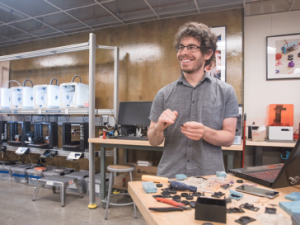

Research Bio
Björn Hartmann is a computer scientist whose research in Human-Computer Interaction (HCI) and Human-AI Interaction (HAI) is focused on the power of computation to amplify human ingenuity - that is, to increase people’s ability to harness information technology towards practical problem solving and learning in increasingly complex settings. Hartmann's work integrates computer science, cognitive science, and design to create tools that enable both experts and novices to develop interactive applications more efficiently.
He is Associate Professor of Electrical Engineering and Computer Sciences at UC Berkeley where he holds the Paul and Judy Gray Alumni Presidential Chair in Engineering Excellence. His research has been published in CHI, UIST, and ACM Transactions on Computer-Human Interaction. Hartmann has received NSF funding and recognition from ACM SIGCHI for his contributions to human-computer interaction. At Berkeley, he teaches courses on design, programming, and HCI, mentoring students in interactive systems and design research.
Current research projects focus on four key areas: 1) Human-AI interactions for creative tasks, specifically design and programming activities; 2) expertise sharing and learning in formal and informal settings; 3) mixed reality and immersive interactions; and 4) tools for embedded systems and digital fabrication.
Research Expertise and Interest
human-computer interaction, user interfaces, end-user programming, design tools, prototyping, crowdsourcing, multitouch, sensing
In the News
A Decade of Innovation and Inspiration at the CITRIS Invention Lab
Key to good design? Start with the end user
An engineer working on a project to improve parks would do well to visit a nearby park to get “a fuller context of what visitors experience,” says mechanical engineering grad student Lora Oehlberg. Oehlberg instructs classes at Berkeley known as the human-centered design course thread, looking at incorporating the needs of the end user into the engineering of goods, products or services.


